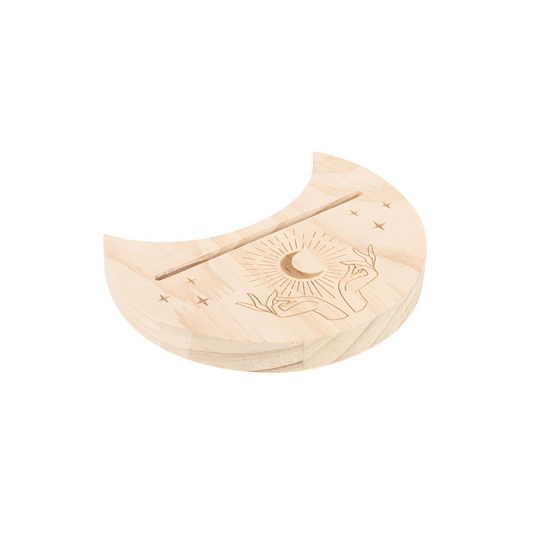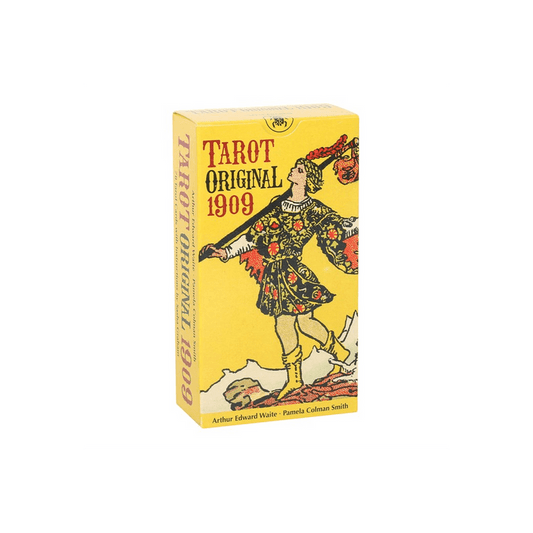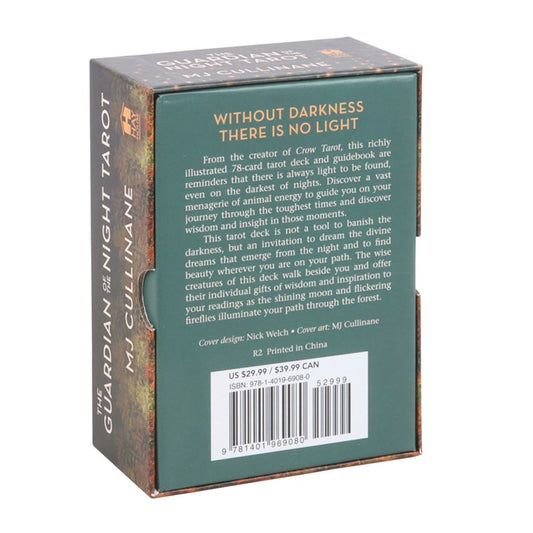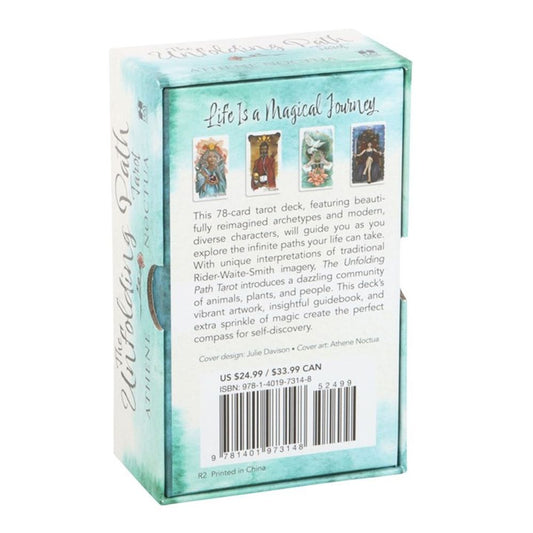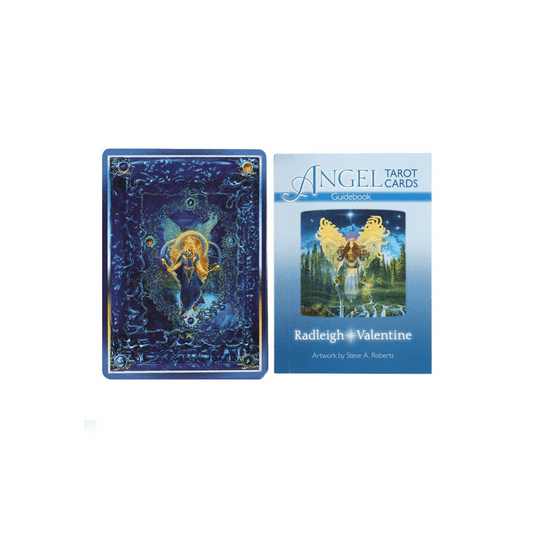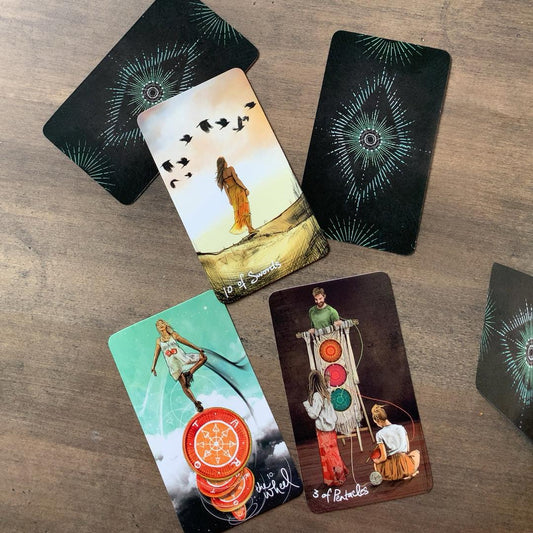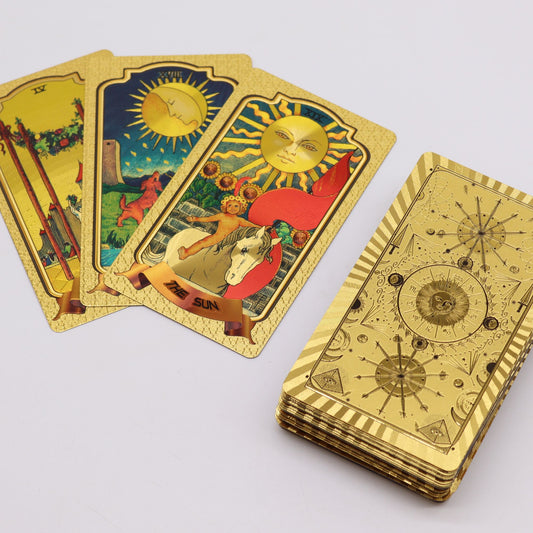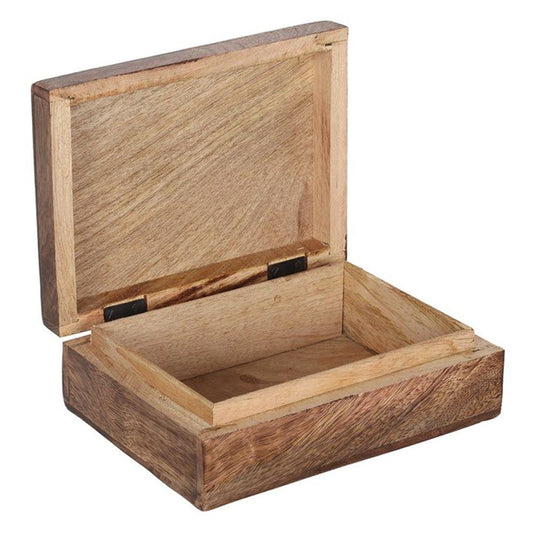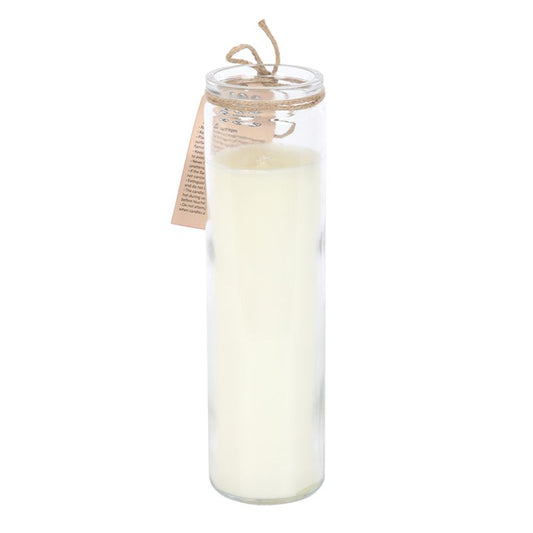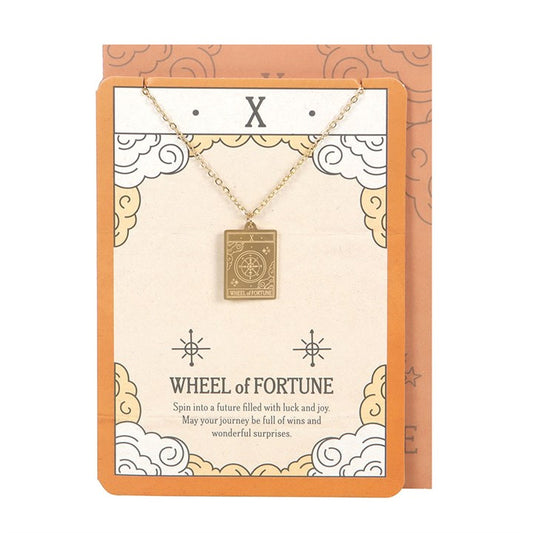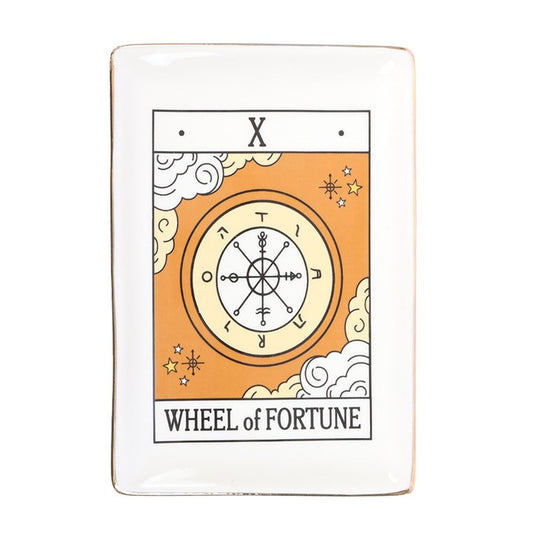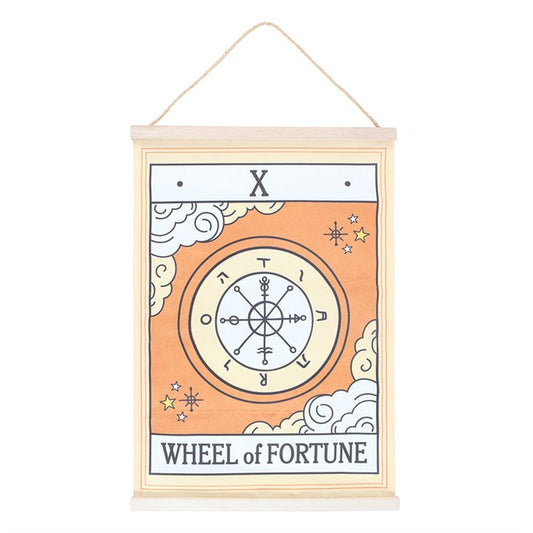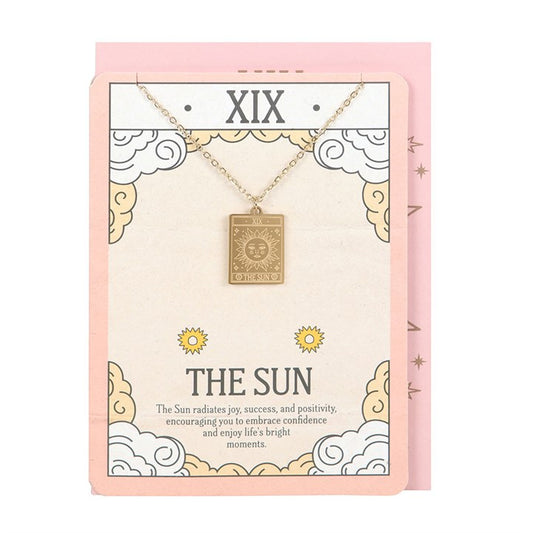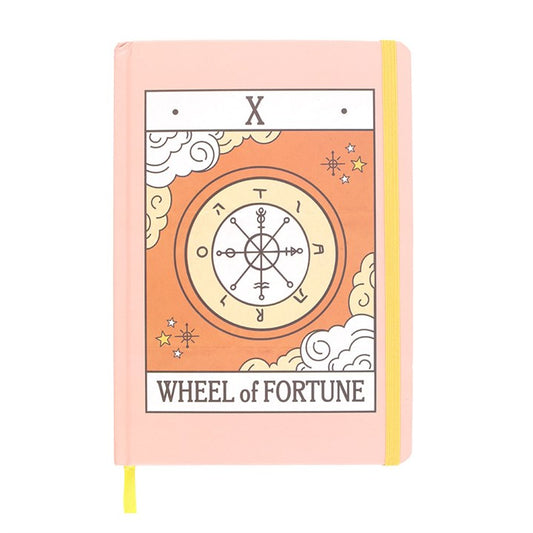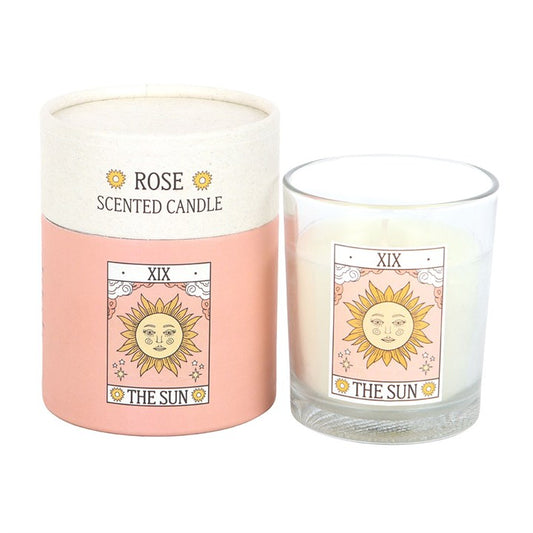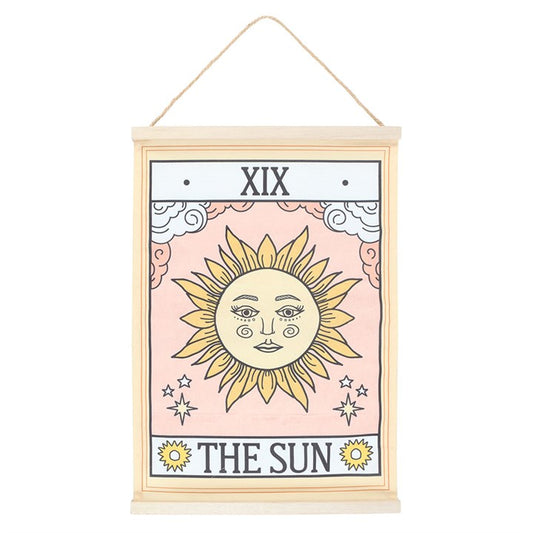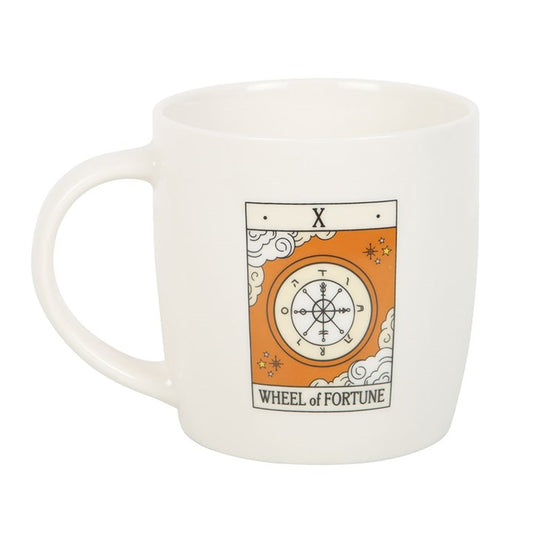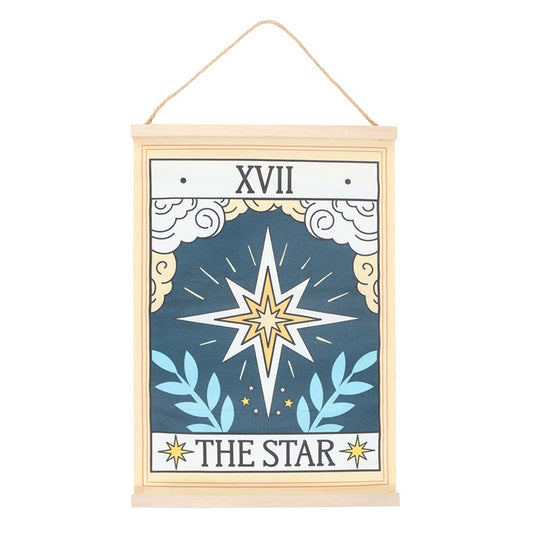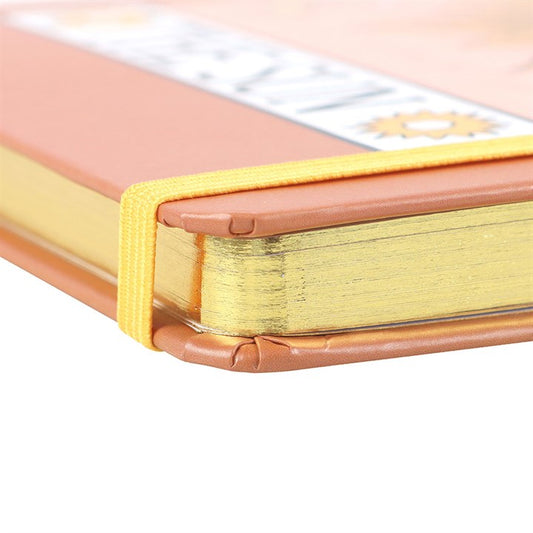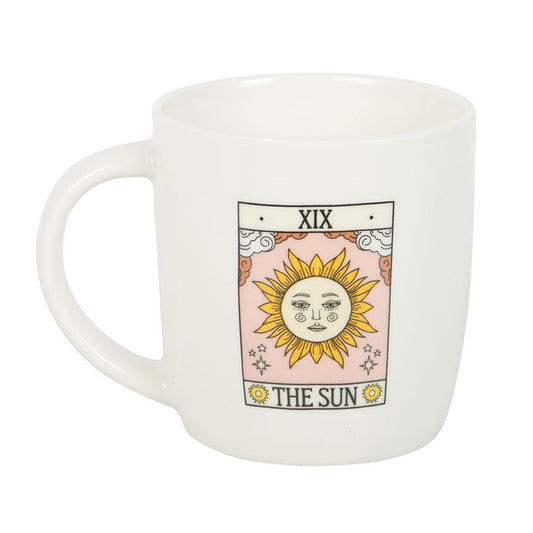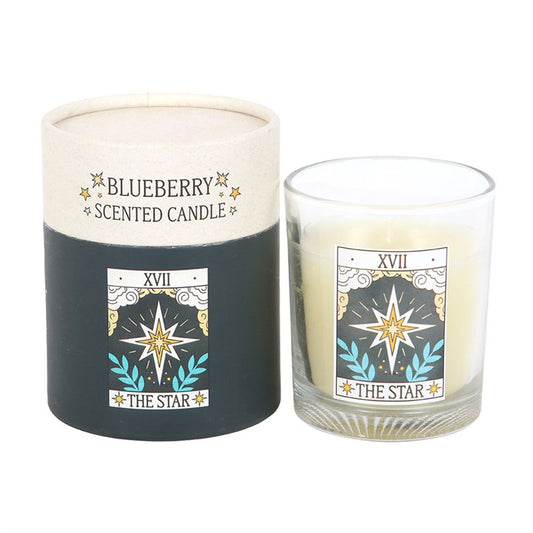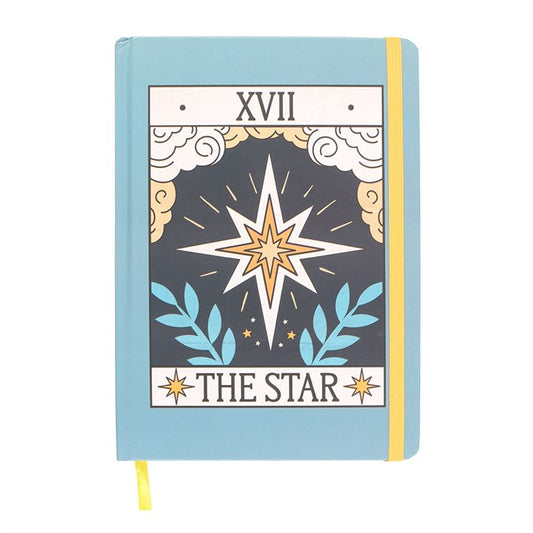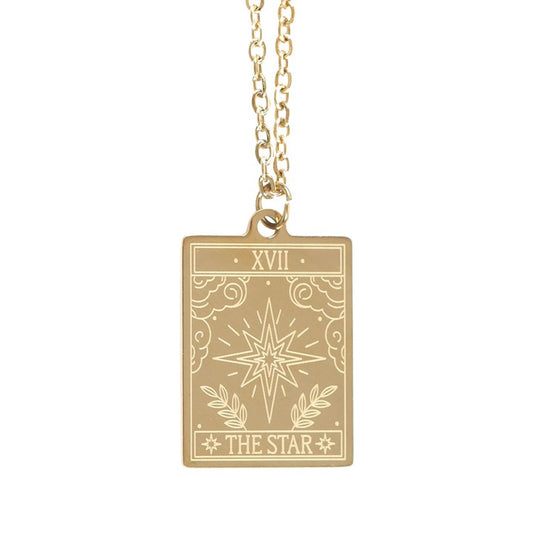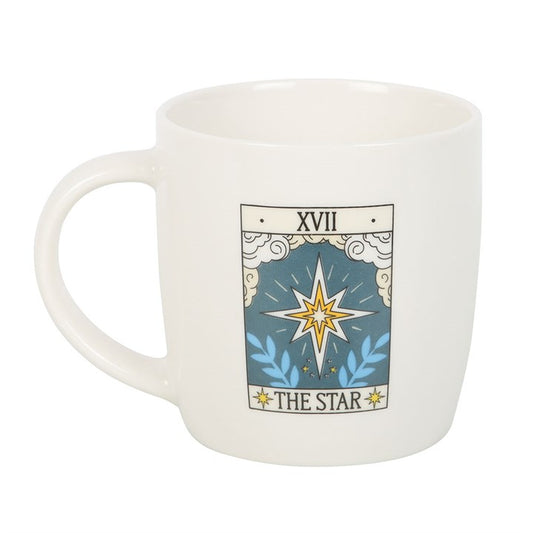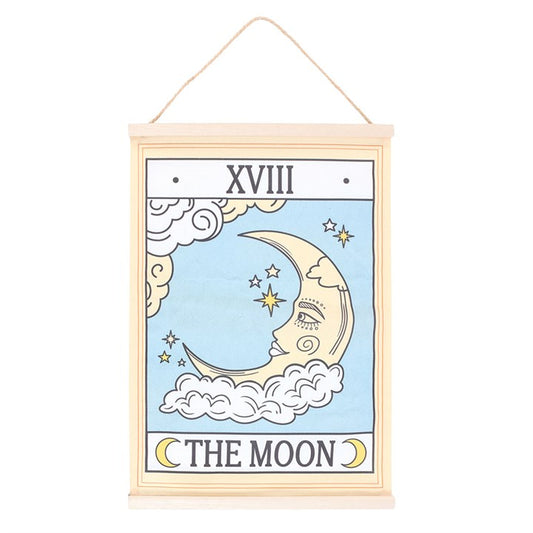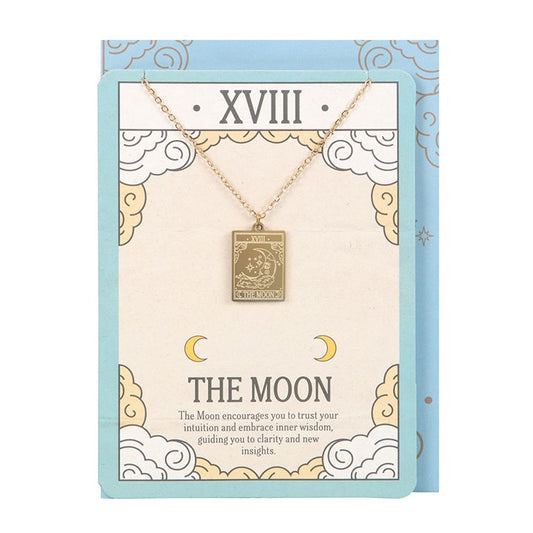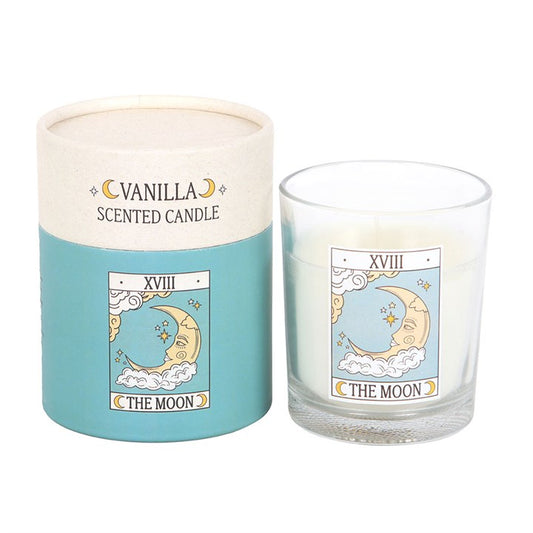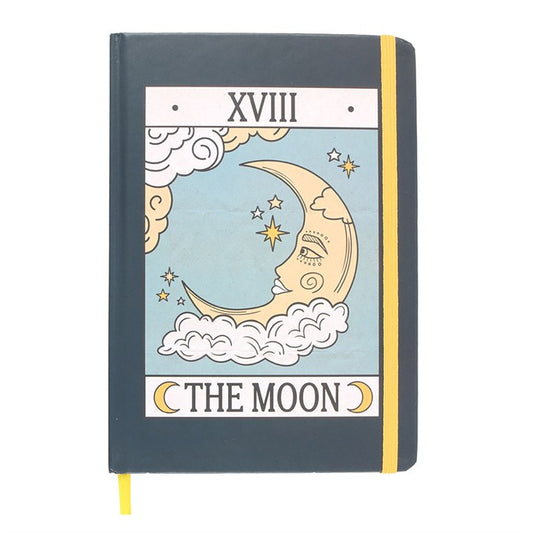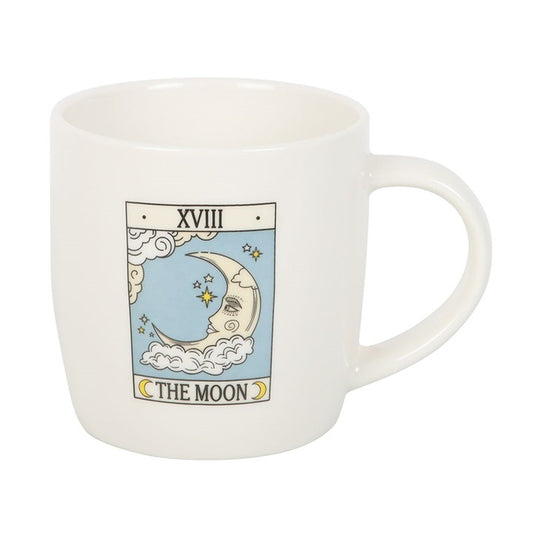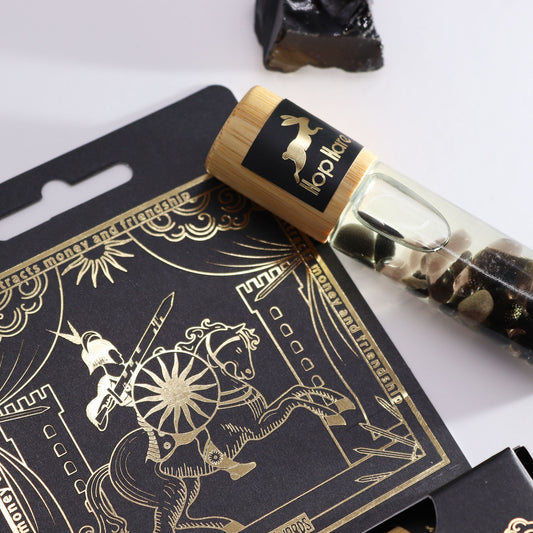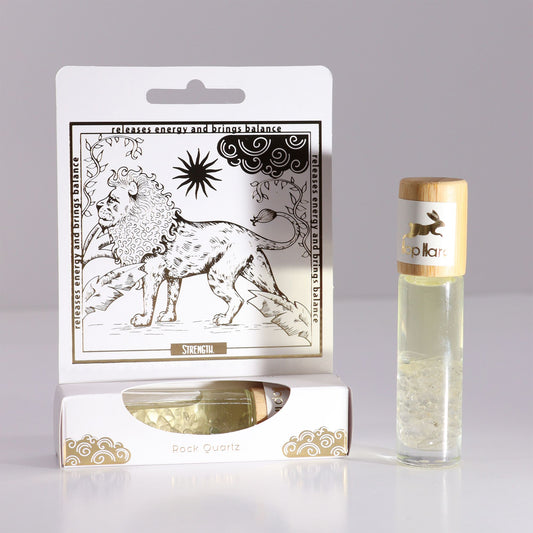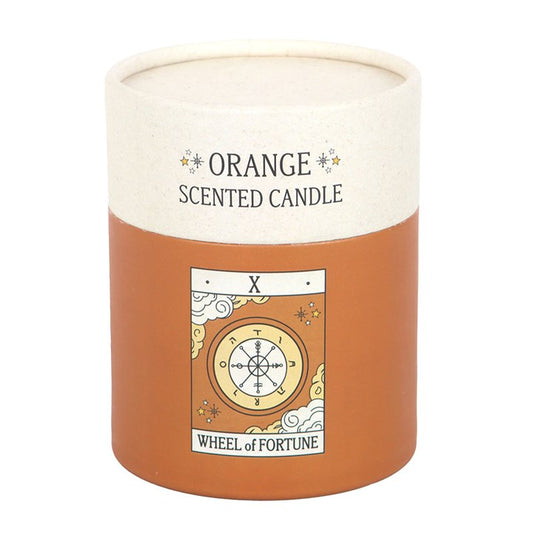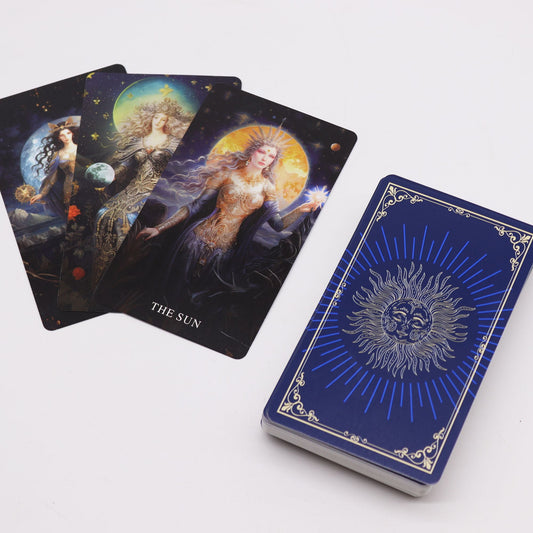Collection: Tarot Shop
Discover the Mystery and Symbolism of Tarot with our Collection of Decks, Cards and Gifts
Delve into the intriguing world of tarot with our hand-picked collection of tarot card decks, including beginner sets and more advanced decks from top brands. Choose from a variety of beautiful, artistic styles, from modern minimalism to gothic fantasy.
Our tarot card decks in the UK suit any level of experience, whether you're new to reading the cards or looking to add a new spiritual tool to your practice. Find top decks like the classic Rider Waite or the Radiant Wise Spirit Tarot to uncover inner wisdom.
In addition to our tarot cards range, we also offer tarot gifts like candles, jewellery, books and more so you can surround yourself with the mystical symbolism and divination of tarot. Our affordable tarot card sets and decks make it easy to start reading fortunes today.
Explore our collection to find the perfect tarot cards to buy in the UK. With free shipping on orders over £50, it's simple to get premium tarot card decks delivered straight to your door. Discover the fascinating spirituality of tarot with us.
-
Natural Mystical Hands Crescent Moon Tarot Card Stand
Regular price £5.95Regular priceUnit price / per -
The Sun Vintage Tarot Velvet Drawstring Bag
Regular price £6.95Regular priceUnit price / per -
The Wheel of Fortune Vintage Tarot Velvet Drawstring Bag
Regular price £6.95Regular priceUnit price / per -
Tarot Original 1909 Tarot Cards
Regular price £28.95Regular priceUnit price / per£22.95Sale price £28.95 -
The Guardian of the Night Tarot Cards
Regular price £27.95Regular priceUnit price / per -
The Unfolding Path Tarot Cards
Regular price £22.95Regular priceUnit price / per -
Angel Tarot Cards by Radleigh Valentine
Regular price £28.95Regular priceUnit price / per£23.95Sale price £28.95 -
The Light Seer's Tarot Cards
Regular price £27.95Regular priceUnit price / per£26.95Sale price £27.95 -
Golden Tarot Cards
Regular price £9.50Regular priceUnit price / per£9.50Sale price £9.50 -
7x5in Triple Moon Tarot Card Box
Regular price £13.95Regular priceUnit price / per -
Vintage Tarot Rose Tube Candle
Regular price £10.95Regular priceUnit price / per -
The Wheel of Fortune Vintage Tarot Necklace on Greeting Card
Regular price £9.95Regular priceUnit price / per -
The Wheel of Fortune Vintage Tarot Trinket Dish
Regular price £8.95Regular priceUnit price / per -
The Wheel of Fortune Vintage Tarot Wall Hanging
Regular price £10.95Regular priceUnit price / per -
The Sun Vintage Tarot Necklace on Greeting Card
Regular price £9.95Regular priceUnit price / per -
The Wheel of Fortune Vintage Tarot A5 Notebook
Regular price £9.95Regular priceUnit price / per -
The Sun Vintage Tarot Rose Candle
Regular price £11.95Regular priceUnit price / per -
The Sun Vintage Tarot Wall Hanging
Regular price £10.95Regular priceUnit price / per -
The Wheel of Fortune Vintage Tarot Mug
Regular price £7.95Regular priceUnit price / per -
The Star Vintage Tarot Wall Hanging
Regular price £10.95Regular priceUnit price / per -
The Sun Vintage Tarot A5 Notebook
Regular price £9.95Regular priceUnit price / per -
The Sun Vintage Tarot Mug
Regular price £7.95Regular priceUnit price / per -
The Star Vintage Tarot Blueberry Candle
Regular price £11.95Regular priceUnit price / per -
The Star Vintage Tarot A5 Notebook
Regular price £9.95Regular priceUnit price / per -
The Star Vintage Tarot Necklace on Greeting Card
Regular price £9.95Regular priceUnit price / per -
The Star Vintage Tarot Mug
Regular price £7.95Regular priceUnit price / per -
The Moon Vintage Tarot Wall Hanging
Regular price £10.95Regular priceUnit price / per -
The Moon Vintage Tarot Necklace on Greeting Card
Regular price £9.95Regular priceUnit price / per -
The Moon Vintage Tarot Vanilla Candle
Regular price £11.95Regular priceUnit price / per -
The Moon Vintage Tarot A5 Notebook
Regular price £9.95Regular priceUnit price / per -
The Moon Vintage Tarot Mug
Regular price £7.95Regular priceUnit price / per -
Set of 4 Vintage Tarot Mugs
Regular price £20.95Regular priceUnit price / per -
HH Tarot Roll On - The Knight
Regular price £12.00Regular priceUnit price / per£12.00Sale price £12.00 -
HH Tarot Roll On - The Lion
Regular price £12.00Regular priceUnit price / per£12.00Sale price £12.00 -
The Wheel of Fortune Vintage Tarot Orange Candle
Regular price £11.95Regular priceUnit price / per -
Tarot Cards with Guide Book - Goddess Arcana
Regular price £9.95Regular priceUnit price / per£9.95Sale price £9.95

Discover Your Path With Our Oracle Cards
Unveil wisdom and guidance with our handpicked oracle card decks. Perfect for beginners and seasoned readers alike, each deck offers unique insights to light your spiritual journey. Find the one that calls to you today!
Tarot Shop
Collapsible content
What are tarot cards?
Tarot cards are a deck of 78 cards used for divination, self-exploration, and gaining spiritual insights. The cards have rich symbolic imagery and archetypal meanings that are interpreted by readers in response to questions or situations posed by seekers. Some key things to know about tarot cards:
- The 78 card deck is divided into the 22 Major Arcana cards and 56 Minor Arcana cards across 4 suits (Cups, Pentacles, Swords, Wands)
- The Major Arcana represents universal life lessons and archetypes. Cards include The Fool, The Magician, Strength, The Hermit, etc.
- The Minor Arcana deals with day-to-day activities and situations. The suits represent the four elements (Cups = water, Pentacles = earth, etc.)
- Origins trace back to 15th century playing cards used in European games, later evolving into tarot for divination
- Imagery on the cards, like The Lovers, Death, the Moon have symbolic meaning and interpretation
- Tarot decks must contain 78 cards to be considered true tarot rather than oracle decks
- Readers shuffle the cards, have seeker draw cards, and then interpret the cards based on their insights
- Can provide guidance on relationships, careers, personal struggles, life purpose, and point seeker inward
- Some read tarot for concrete predictions and fortune telling, but most see it as unlocking intuitive wisdom
Though often associated with psychic abilities, most readers view tarot as a tool to gain perspective and clarity to make positive changes aligned with one's highest purpose and potential.
How many cards in a tarot deck?
There are 78 cards in a standard Tarot deck. The cards are divided into two main sections:
- Major Arcana - 22 cards that represent archetypes, life lessons, and spiritual growth. They start with The Fool (card 0) and go up to The World (card 21). Some examples are The Magician, The High Priestess, The Lovers, etc.
- Minor Arcana - 56 cards divided into four suits with 14 cards each. The suits are very similar to a traditional playing card deck and consist of:
- Wands - Associated with fire energy, passion, inspiration. Aces represent new beginnings.
- Cups - Associated with water energy, emotions, relationships. Aces mean new love/emotions.
- Swords - Associated with air energy, intellect, conflict. Aces indicate a new way of thinking.
- Pentacles - Associated with earth energy, prosperity, health. Aces symbolize new financial opportunities.
In the Minor Arcana each suit contains:
- 10 Number cards - Ace through 10
- 4 Court cards - Page, Knight, Queen, King
So in total, 78 cards make up a complete Tarot deck - 22 Major Arcana and 56 Minor Arcana cards. This composition allows the Tarot to provide spiritual insights and wisdom for those who learn the symbolism and meanings behind the intricately designed cards.
How to read tarot cards?
Here is a quick overview of how to read tarot cards:
- Prepare your space - Create a calm, quiet atmosphere before your reading. Light candles, burn incense, play soft music to set the mood.
- Focus your intention - Before shuffling the cards, clearly define your question or the issue you want guidance on.
- Shuffle and cut the deck - Shuffle the cards thoroughly while concentrating on your question. Then cut the deck into 3 piles and reassemble.
- Select your spread - Choose a tarot spread that suits your question. Spreads vary from 1 card to complex multi-card layouts. Common spreads are Celtic Cross, 3 Fates, Tree of Life.
- Lay out the spread - Deal the cards face down into the spread pattern you chose. Place them from left to right or top to bottom.
- Reveal and interpret - Flip each card over and examine its imagery and meaning. Interpret each card individually then look for connections between cards.
- Connect the meaning - Piece together the cards' combined narrative and symbolic meaning as it relates to your question. Intuit deeper insights from the reading.
- Close the reading - Shuffle the cards again to clear their energy. Thank them for their guidance. Take notes on insights gained from your reading.
The more you practice, the more intuitive you will become at interpreting the card meanings and relationships. Allow your inner wisdom to guide you.
What is tarot used for?
Tarot cards are most commonly used for:
- Divination - Tarot is used to gain insight into past, present, and future events and situations. Readers use the cards to tap into intuitive wisdom and provide guidance.
- Meditation and Reflection - Tarot cards can be used as focal points for meditation, self-reflection, and sparking inner contemplation. The symbolic cards allow us to explore our deeper selves.
- Personal Growth - Tarot readings often provide advice and perspective that allows people to overcome challenges and foster positive change and development.
- Understanding Archetypes - The tarot cards represent universal archetypes and situations we all face. Working with the cards helps people understand core human experiences.
- Subconscious Exploration - Tarot helps access the subconscious in ways the conscious mind cannot. The imagery triggers something in our deep minds.
- Spiritual Development - For some tarot supports spiritual connection with something larger than ourselves and a higher purpose.
- Decision Making - Readings can reveal insights that guide decision making by clarifying situations and identifying wise choices.
- Transition Points - Tarot is often used during major life transitions like relationships, careers, moves to gain perspective.
The symbolic nature of tarot makes it an incredibly flexible tool to find meaning, guidance, and enlightenment in all aspects of life.
How accurate is tarot card reading?
The accuracy of tarot card readings is a debated topic, but here are some key considerations:
- Highly subjective - Accuracy depends heavily on the intuition, skill, and interpretation of the individual tarot reader.
- Not scientifically proven - There is no concrete scientific evidence that tarot readings provide accurate predictions of the future. The effectiveness relies on belief systems.
- Better for general guidance - Tarot is generally more accurate for providing broad personal guidance rather than precise predictions. The cardsunlock intuitive insights.
- Self-fulfilling prophecies - If a person believes and acts on a tarot reading, they may unconsciously align their choices with the reading.
- Reflects probabilities - Tarot may reflect the most energetically probable outcomes based on current situations and decisions. The future is always in flux.
- Archetypal significance - The tarot symbols and archetypes mirror universal human experiences, so they resonate on a deep level.
- Practice develops intuition - Regular tarot practice can develop one's natural intuition and perception to increase accuracy over time.
Overall, tarot accuracy depends on the reader's abilities and the seeker's openness. Due to its symbolic nature, tarot may be more aligned with revealing truths about the present moment than making definitive claims about the future. The cards are best used for guidance rather than as a fortune telling method.
Home Decor Inspiration
View all-

Ultimate Guide to Creating Cosy in Your Home
Discover essential tips for creating a cosy home with our guide on colour theory, lighting, textures, and space organisation. Learn DIY projects, product recommendations, and eco-friendly practices to enhance comfort...
Ultimate Guide to Creating Cosy in Your Home
Discover essential tips for creating a cosy home with our guide on colour theory, lighting, textures, and space organisation. Learn DIY projects, product recommendations, and eco-friendly practices to enhance comfort...
-

The Best Plants for Your Bohemian Home - A Comp...
Discover the best plants for Bohemian decor, including care tips and styling ideas to create a lush, eclectic home vibe. Explore layering, natural materials, green corners, and more to enhance...
The Best Plants for Your Bohemian Home - A Comp...
Discover the best plants for Bohemian decor, including care tips and styling ideas to create a lush, eclectic home vibe. Explore layering, natural materials, green corners, and more to enhance...
-

Crafting a Bohemian Bedroom Oasis on a Budget
Embracing Bohemian Elegance Bohemian style, known for its eclectic and artistic flair, can also be a uniquely personal and cost-effective approach to bedroom design. This article explores various budget-friendly techniques...
Crafting a Bohemian Bedroom Oasis on a Budget
Embracing Bohemian Elegance Bohemian style, known for its eclectic and artistic flair, can also be a uniquely personal and cost-effective approach to bedroom design. This article explores various budget-friendly techniques...

